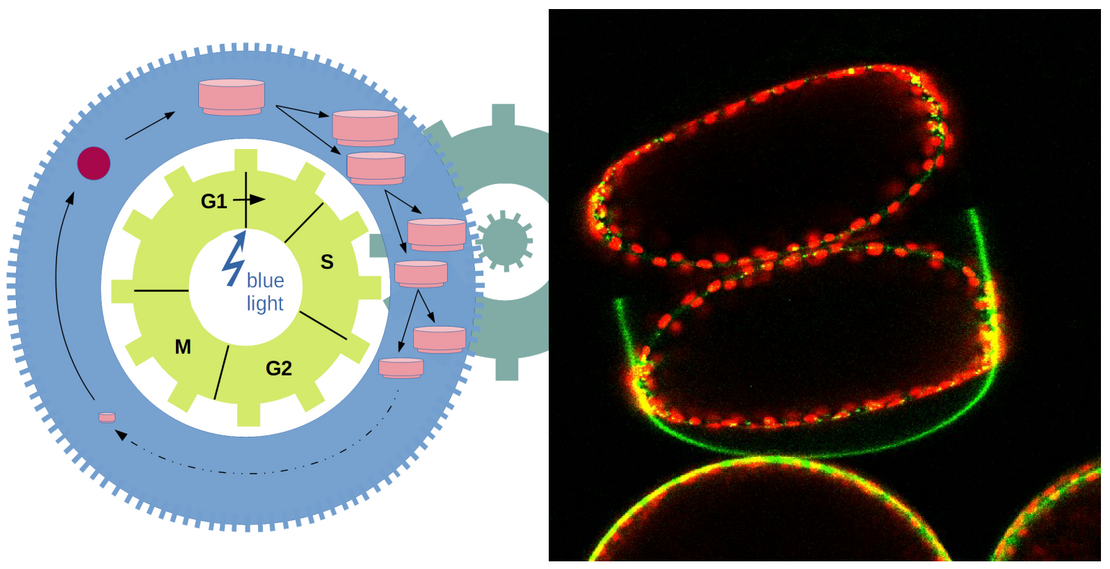Project 1
P1: How does the cell cycle control the diatom generation clock?
Project description
Diatoms are abundant in our world, in freshwater and marine habitats. Over 20% of the total carbon fixation worldwide can be attributed to these tiny algae which are characterized by their ornamental cell wall of biosilica.
Many time scales are important in the life of diatoms: On a short time scale they sense nutrients and are able to communicate. On a medium time scale they are subjected to the cell cycle for vegetative cell division. But during these divisions they shrink in average size until they become so small that they have to start a size restoration process which generates a life cycle on a large time scale covering many years.
In this project we ask the question about the interconnection of these different timescales. By computer simulation and chronobiological experiments aided by cell staining of distinct generations, we follow the fate of individual cells in order to understand ecological oscillations such as periodic algae blooms.
Find a short project video here.
More information:
Fuhrmann-Lieker et al., Is the diatom sex clock a clock?, J. Roy. Soc. Interface 18, 20210146, doi: 10.1098/rsif.2021.0146
Kucki & Fuhrmann-Lieker 2012, Staining diatoms with rhodamine dyes: control of emission colour in photonic biocomposites, J. R. Soc. Interface 9, 727, doi: 10.1098/rsif.2011.0424

Left: Representation of two interacting timescales in the life of diatoms: cell cycle (inner dial) and life cycle with size reduction-restitution (outer dial). Right: Confocal fluorescence image of cells with partially stained silica cell walls (green) and chloroplasts (red). Photo: M. Kucki
